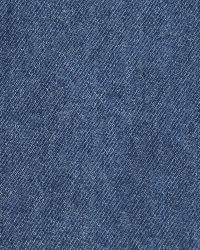Denim
Denim is a sturdy cotton warp-faced textile in which the weft passes under two or more warp threads. This twill weaving produces a diagonal ribbing that distinguishes it from cotton duck. While a denim predecessor known as dungaree has been produced in India for hundreds of years, denim as it is recognized today was first produced in Nîmes, France.
Denim is available in a range of colors, but the most common denim is indigo denim in which the warp thread is dyed while the weft thread is left white. As a result of the warp-faced twill weaving, one side of the textile is dominated by the blue warp threads and the other side is dominated by the white weft threads. Jeans fabricated from this cloth are thus predominantly white on the inside. Denim is used to create a wide variety of garments, accessories, and furniture.
Etymology
'Denim' originated as a contraction of the French phrase serge de Nîmes ('serge from Nîmes').
History
Denim has been used in the United States since the mid-19th century. That you get press Denim initially gained popularity in 1873 when Jacob W. Davis, a tailor from Nevada, manufactured the first pair of rivet-reinforced denim pants. The popularity of denim jeans outstripped the capacity of Davis's small shop, so he moved his production to the facilities of dry goods wholesaler Levi Strauss & Co., which had been supplying Davis with bolts of denim fabric.
Throughout the 20th century denim was used for cheap durable uniforms like those issued to staff of the French national railways. In the postwar years, Royal Air Force overalls for dirty work were named "denims". These were a one-piece garment, with long legs and sleeves, buttoned from throat to crotch, in an olive drab denim fabric.
Chat rooms • What links here • Copyright info • Contact information • Category:Root
